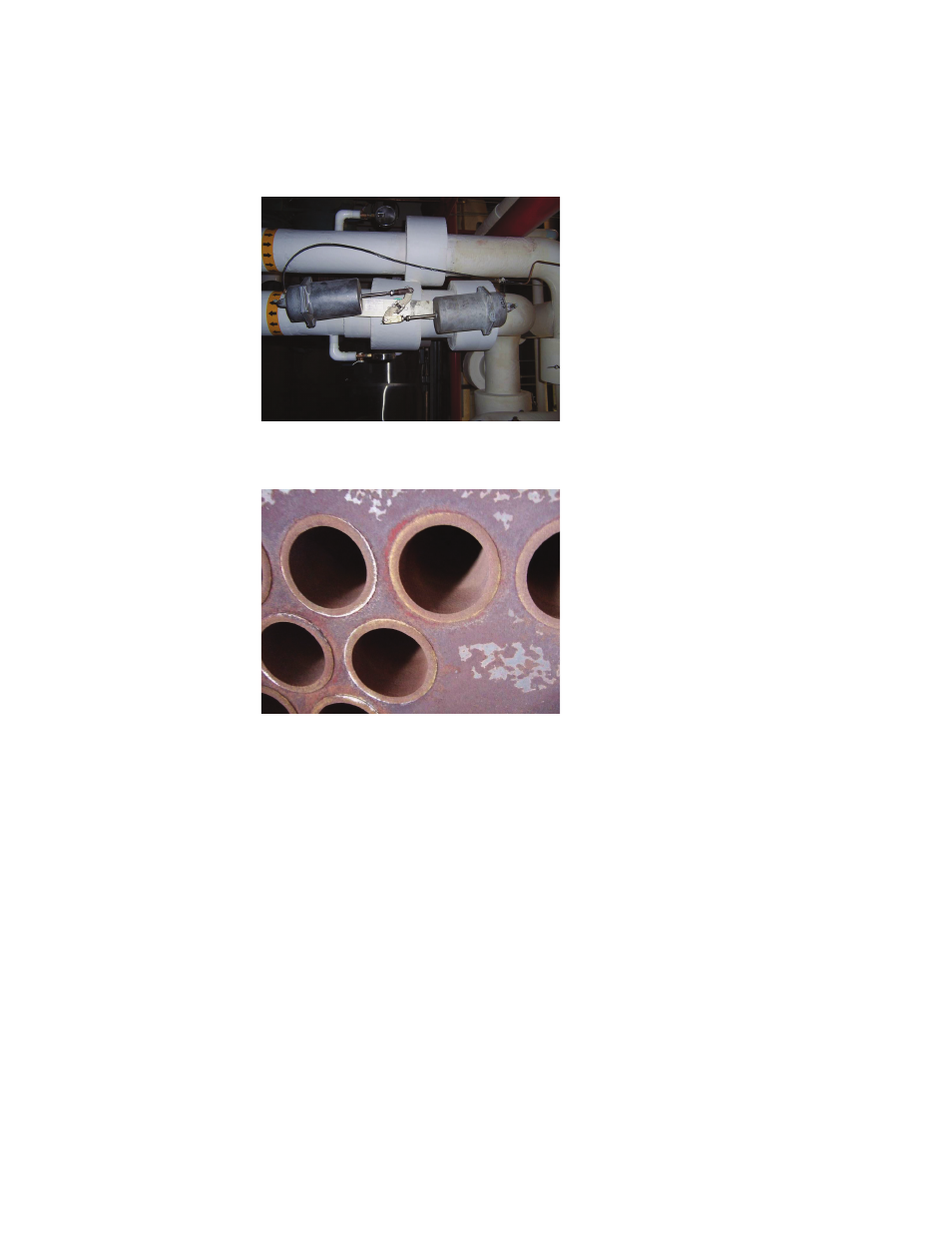Retrotec USACE User Manual
Page 194

D64 ENERGY & PROCESS ASSESSMENT PROTOCOL
the operating chillers since there will be an additional heat gain of the shut-
down chillers. Chillers can be isolated by turning off pumps and closing valves
(Figure D111). If one pump serves multiple chillers, consider replacing it with
multiple pumps or installing multispeed drives.
Figure D111. Valve to isolate offl ine chiller.
D.4.2.2 Dirty Heat Exchangers (Ineffi ciency)
Figure D112. Dirty tubes of a heat exchanger.
Chillers transfer heat from the chilled water to a refrigerant to a cooling water
or air. Water that passes through the evaporator is used to cool building spaces.
Cooling water entering the condenser removes heat from the refrigerant,
which is then rejected to the atmosphere by a cooling tower. The surfaces
of the heat exchangers in the evaporator and condensers can become fouled
by water deposits, scales, dirt, and similar materials, which lowers their heat
transfer capabilities (Figure D112). As these surfaces become more fouled,
the chiller’s effi ciency is reduced. Information is available from the chiller
manufacturer regarding the effect that fouling factors have on performance.
The surfaces should be cleaned seasonally. There are automatic tube cleaners
available for installation that direct brushes down the tubes while the chiller is
operating. The condenser water should be fi ltered and chemically treated to
remove scale, algae, and chalky deposits. Check for fi ltration and water treat-
ment of the condenser water and periodic cleaning of the evaporator tubes.
